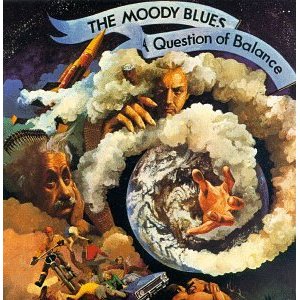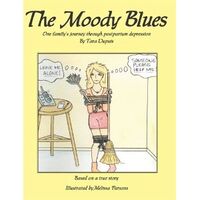The Moody Blues
The Moody Blues are a mood disorder of non-specific depression, characterized by low levels of enthusiasm and high levels of the urge to listen to progressive English rock music from the late 1960's. Bouts of "the Moody Blues" tend to strike on Tuesday afternoons, especially after spending the previous several nights in white satin. There is no known cure for the condition, although listening to The Cure can provide some relief from the symptoms.
History[edit]
The name "Moody Blues" comes from the old wives' tale that there are four kinds of sadness: the Blahs, the Beatles, The Blues Brothers, and The Moody Blues. (As a side note, a similar but extremely rare diagnosis called the "Quarrymen" has been reported in extreme cases.) This being said, the term "Moody Blues" does not appear in any written musical or medical texts until the year 1964 when the phrase appeared on a play-list of a London music club. Then, in 1966, doctors of the Medical Offices of Thomas, Lodge, Pinder, & Hayward, P.C., made the first diagnosis of The Moody Blues. Their patient, one Mr. Lancelot "Pink" Freud, complained of a compelling sadness and bursts of tears, combined with an intractable urge to listen to classical music, sitars, and The Kinks. Many of the other complaints of Mr. Freud have since been listed in the official diagnostic criteria for the disorder in the DSM-IV.
Symptoms[edit]
Over 94% of sufferers of The Moody Blues first become symptomatic on a Tuesday afternoon. They develop a compulsion to chase the clouds away and feel drawn to trees. Then they are really on their way - they begin to hear gentle voices and see reflections of their minds everywhere they look. Patients may try to explain it all with a sigh, but are almost always unsuccessful. In the later stages of an attack, some hours after onset, the patient will feel that nothing matters to him or her, and will typically bemoan the feeling of being caught swaying in a fairy-land of love lost. One patient in1977 claimed to feel he had been through the desert on a horse with no name, but he subsequently died of Botulism and was determined by doctors not to have suffered from The Moody Blues at all. Patients may also be obsessed with their children's children's children's children.
Diagnosis[edit]
Only a medical professional can diagnosis The Moody Blues. In fact, the condition is one of the most-often falsely self-diagnosed illnesses in the Western world. This stems from the fact that the Moody Blues can mimic the symptoms of many other mental disorders, ranging from Schizophrenia to Depression to Baron Harkonnen's Disease.
Doctors will use the criteria of the DSM-IV when first testing a patient for the Moody Blues. First, the patient will be asked to fill out a questionnaire written in broken-English (regardless of which language the patient speaks). The questionnaire is just a facade meant to distract the sufferer while gauging his or her reaction to sitar music that the doctor will play in the background. Second, the patient must be filmed doing demanding physical exercise in the nude. If the sound of clapping, cymbals, or falsetto singing emanates from the patient, then there is a 100% chance that the patient is suffering from the Moody Blues.
Actors have also been observed contemplating the sound that they have heard in some person's hello, vocally expressing this in a sound much like a combination of a crying 38-year-old man and a rabid wolf. Mailmen have also been seen recovering from extreme bouts of rhetorical questions, such as "Why do we never get an answer when we're knocking at the door, with a thousand million questions about hate and death and war?" (The answer to this question is the fact that they are there to deliver mail, not take polls. Keep in mind that these mailmen are mentally unstable.)
Prognosis and Treatment[edit]
There is no cure for the Moody Blues. However, patients can live a "normal" life by following a strict treatment regimen that includes all of the following: (1) avoiding consciousness on Tuesday afternoons; (2) never spending a night in white satin; and (3) listening to a healthy diet of new-wave 80's music by bands such as Duran Duran and The Cure. Patients may also take the semi-prescription drug Zoloft, although studies show it only elevates moods slightly more than a placebo album of music by Pink Floyd. However, lingering symptoms have been observed up to ten years after the disease has subsided.

